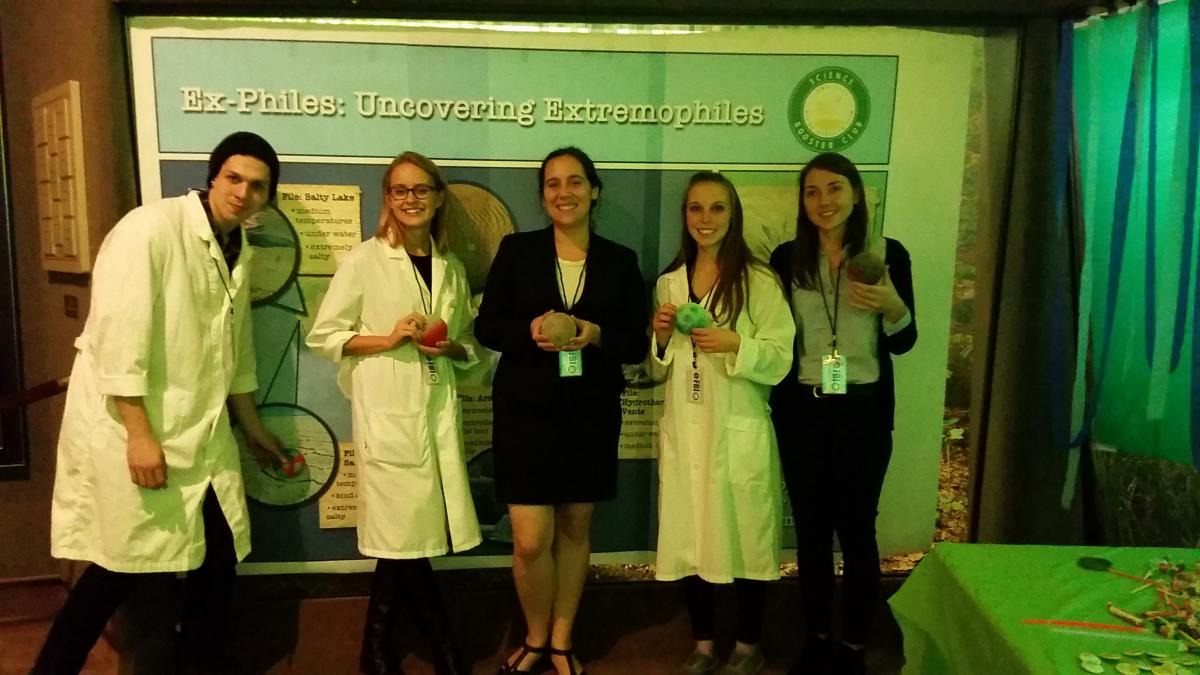This fall, I had a problem. Our Iowa City club was invited back to a large Halloween event, The University of Iowa’s Creepy Campus Crawl. But, we were under probation—in trouble for being too much fun the last time around. Our activities in 2015 generated “excessive audience interest,” leading to “extensive bottlenecks” before and around our exhibits, which caused a variety of difficulties for the crowd and the venue.
In September, when we began planning for the 2016 Crawl, I told the interns that because we were too much fun last year, we’d play it safe this time around. Instead of an interactive exhibit, we would just hand out swag and advertise our appearance at the upcoming Sloth Fest. (Where we intend to offer butt-kicking fun.) The interns protested mightily. Surely, we could find a middle ground? It had to be possible for us to have some fun, right? They were relentless, and insisted on designing an exhibit. Dejected and pessimistic, I gave the project the go-ahead.
For the event theme of “Uncharted Territory,” they decided to explore the world of the archaebacteria, which thrive in some of the world’s most extraordinary and extreme environments. The title of the exhibit: "Ex-Philes: Uncovering Extremophiles". We made some fake badges, dressed like FBI agents ready for labwork, and we were good to go.
The interns enlisted the volunteer services of a local artist to design a snazzy backdrop. The artist, Emily Jalinksky, whose work can also be seen here, currently has a show at one of President Obama’s favorite bookstores. She was gracious enough to spend over 20 hours on the project. She also volunteered to install the exhibit and to work the booth.

The exhibit experience went like this: Volunteers helped young children interact with the backdrop's matching activity while their parents watched. Then, the children were led to another volunteer, who displayed and explained a phylogenetic tree of life that illustrated how archaebacteria are related to our domain, the eukaryotes. Other volunteers then distributed candy and information, while gathering the email addresses of interested adults.
How’d it go? Well, we greeted a thousand people over the course of three hours. While our contact time was limited (along with our ability to have fun), the vast majority of participants were exposed to important concepts in evolutionary biology, such as the relatedness of organisms, evolution as the driving force for diversity on Earth, and the beauty of that diversity and relatedness. Not bad for a few minutes of face time.
Why is this kind of engagement so important? For many children, their first exposure to evolutionary theory comes as a brush with controversy. Perhaps their lessons are tainted with a disclaimer—either spoken by their teacher or stuck onto their textbook. Or perhaps they hear the word "evolution" for the first time in the context of conflict in their extended family, or even in their religious community.
Many of the children we worked with at this event were so young that we probably provided their first exposure to evolutionary theory. What will they take away from it? Our intention: that evolution is beautiful. That they can understand evolution. That understanding and learning are ways to have fun.
We got the attention of many parents by openly talking about evolution, which made them wary that they were about to hear a condescending and anti-religious presentation. They were not expecting nice people playing age-appropriate games with their child. It was clear that many of the parents enjoyed watching their children interact with us, which is wonderful because it meant that they, too, got a chance to learn. These types of experiences are very important for cultural change, for developing tolerance and acceptance. When people have preconceived notions about another group, when they expect that group to cause problems, there is tension. When that group is instead enriching their children’s lives, that tension can be dramatically reduced.
Our experience at the Crawl this year was overwhelmingly positive. Our volunteers had a great time, our audience had a great time, and we managed not to be so exciting that we got kicked out of the venue. What makes me more excited, though, is not the immediacy of the experience itself, but its scalability—its potential for making a larger impact. We received so much volunteer support, and some very generous in-kind donations, making the total cost of the exhibit $72, most of which went to buying candy (it was a Halloween event, after all!). To give a thousand people a positive experience of evolution cost less than a dime a head. You can put this exhibit up anywhere, at very little cost, and with very little training.
Wouldn’t it be great if evolution wasn’t associated with controversy for this generation of American children? What if every kid’s first experience with evolution was associated with beauty and fun (and candy!), rather than angry, tense adults? That could really change how people view evolution in America. At NCSE, we’re developing the tools to help every community give their children exactly that experience.

